Well-known for the pilgrimage trips that are being undertaken in this region, Tibet is a very popular location, both among pilgrims as well as the trekkers and tourists. The natural beauty of Tibet is unique, and many people visit to explore or hike it. A Tibet tour is a majorly undertaken pilgrimage. However, there are many non-pilgrimage tourists, as well. People from around the world come here for Kailash trekking and also for the Mansarovar Yatra. Known as the “king of holy mountains,” the myths and folklores associated with the Mount Kailash, as well as the Mansarovar (the pilgrimage plus taking a holy dip into Mansarovar Lake, the highest freshwater lake in the world), make them very popular and significant tourist locations. Mount Kailash is an area sacred to four religions, and it is said that completing the Kora (a sacred circuit) around Mount Kailash can wash off the sins of a lifetime - and according to Hindu mythology, Mount Kailash is the abode of lord Shiva and his wife Parvati.
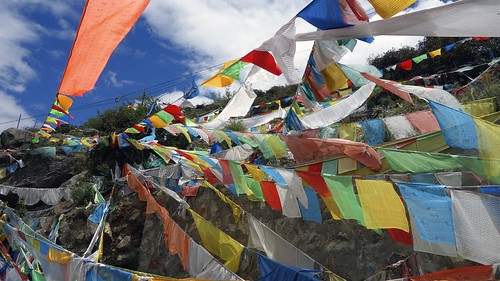
Detailed planning and organizing everything ahead of time are essential. Here are our best tips to plan your trip to Tibet.
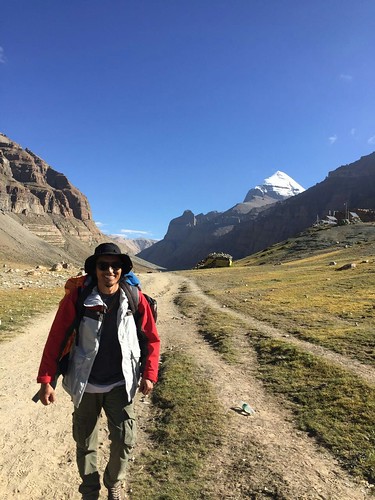
Tibet travel permit
If you are a foreigner, a Tibet travel permit is the first thing that you need to acquire in order to undertake the trip. Applying and getting the permit takes time, and it is very important that you apply for the permit first thing. The application procedure requires 5 working days to be completed. The political situation of Tibet is unstable, which is why getting a permit easily is very difficult. Because Tibet is a province of China, special permits, along with a Chinese visa, are essential for travelers to Tibet. You will need four documents in total for undertaking a trip to Tibet. The Chinese visa and your passport are required, which you can apply for and acquire from your own country. The Tibet entry permit is the most important document, and the key to your travel to Tibet. All foreign citizens need the TTB permit, though the residents of Hong Kong and Macau are exempted from this list. However, they do need the home return permit and the Chinese SAR passports. The next important document is the alien’s travel permit. This is essential for visitors who need to travel into areas outside Lhasa. This permit can be obtained after reaching Tibet. Lastly, there is the military permit, which can be obtained from the military. This is necessary since you will probably be trekking and passing through a number of sensitive areas in the region of Tibet.
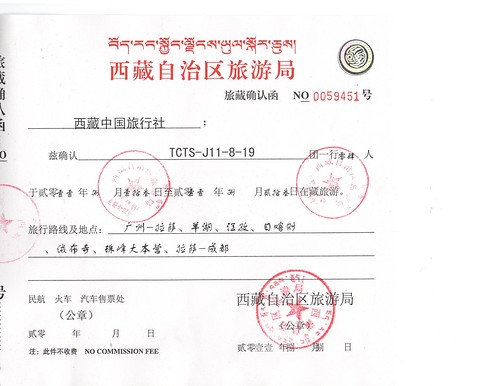
Best time to go
Since Tibet is a high altitude region, there are certain times of the year ideal for visiting Tibet. The climate of Tibet is cold and dry, and there is strong sunshine along with drastic difference in temperature from day to night. The air is thin, and there is a lack of oxygen due to the altitude.
Fun fact: the boiling point for water is lower here.
The best time for visiting Tibet would be the spring season or the months of April and May. The ice melts during this time, and many remote routes, which are blocked by snow during the winter season, are now open for exploration. Also, the Saga Dawa Festival, which starts mid April, is a famous Tibetan cultural event that many travelers wish to enjoy. This time of the year is also a perfect time for a peaceful tour at Tibet, since the tourist season is just starting and the number of people coming here is moderately less. The months of June, July, and August encompass the busiest travel season every year in Tibet. The summer season begins and the weather conditions are just right for a long trek or pilgrimage. The oxygen content in the air is also higher during these months - and at times, there is rainfall at night. However, it is very difficult to get train tickets to Lhasa during the summer months due to the high concentration of visitors. The months of September and October are the best time for those tourists who wish to hike and trek the various mountain peaks, including Mt Everest.
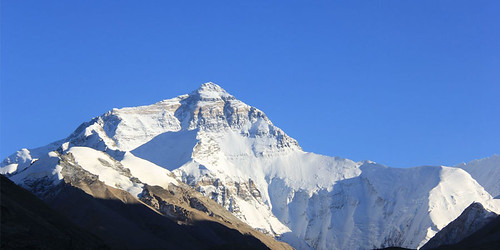
How to prepare for your Tibet trip?
Preparation for any trip is an important activity which should be undertaken with care and organized planning, especially for walkers, since the majority of the tourists coming to Tibet are either pilgrims or trekkers. The first thing to do is to acquire the right permits and book your flight or train tickets. Once you have your permits and tickets, decide on what to pack.
It is always very helpful to check the weather forecast for the days during which you have to travel and stay in the various regions of Tibet, and packing should be done accordingly. If you wish to go for the Tibet tour along with a large group or a tour operator, you can have to book your tour package, as well. Needless to say, it is always favorable to book packages with travelling agencies that have been in this business for long and have a good reputation (and they will have a detailed packing list for you). Carry an ample amount of warm clothes (layer!), an extra pair of shoes, and trekking and hiking equiptment. A sleeping bag is critical and cannot be left out of your list either.
A customized medical kit, identity cards, torches, extra batteries for your torch as well as camera, and a power bank are some of the small but significant items which should be packed. Do remember that you may not have equal access to electricity throughout the trip, hence a quality power bank is very important to include.
Get to Tibet by train or flight
Depending from where you are from, you can take either a train or flight. However, majority of the pilgrims and travelers come to Tibet by flight and then commute to parts of the tour via train within the country. There is no direct train route from Hong Kong to Lhasa. In fact, there are four different routes to Tibet if you are travelling to Tibet through Hong Kong.
You can fly to Chengdu from Hong Kong and from there take a connecting flight to Xining and after that take a train for 24 hours to Lhasa. This is the second fastest route to Tibet. This is a major overland gateway to Tibet and you can easily get booking for a train from here than booking Tibet bound trains from Shanghai or Beijing.
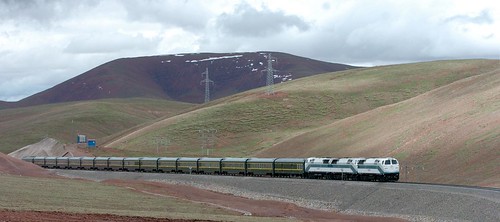
You can also take a flight to Chengdu from Hong Kong and then travel by train for 44 hours to Lhasa. This is a budget plan, and you can enjoy the stunning scenery from the train on this route. Another advantage of this trip is that you can allow your body enough time to get used to the weather conditions and altitude of Tibet. However, the time taken to travel the distance is much longer, and could be a drawback.
A third choice would be travelling from Hong Kong by flight to Chengdu and again taking a flight to Lhasa. This is the fastest route from Hong Kong to Tibet. This is expensive, though, compared to the other choices you have, and there is a chance of developing altitude sickness because you are arriving so quickly.
The last choice would be taking 2 hour train from Hong Kong to Guangzhou and then a 54 hour train journey to Lhasa. Tourists can also reach Lhasa from Kathmandu, as well, but the route via Hong Kong is easier since there are more public transport options here.
Top things to do and experience in Tibet
The first event that comes into our mind when we think of Tibet is the Saga Dawa Festival season. This is the best time of the year to visit Tibet if you are fan of learning the culture and people of the places that you travel to in their true essence.
Travelers can visit a number of monasteries throughout Tibet. In fact, if you are undertaking the Mount Kailash Kora or the Mansarovar Yatra, then you would be stopping at a number of much monasteries. Be sure to explore the Potala Palace, which is a huge treasure house of Tibetan history and culture.
Visit Jokhang temple, the most sacred temple of the Tibetans. Barkhor Street, the area around the Jokhang Temple, is a perfect shopping destination and the perfect place to stock up on gifts and souvenirs.
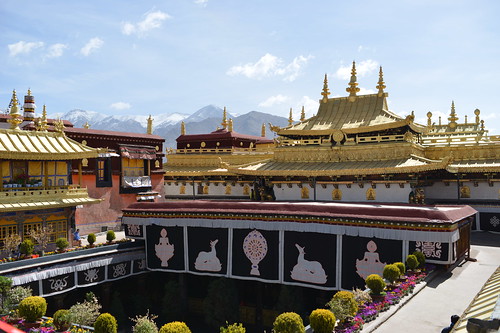
Lake Yamdrok is a large, freshwater lake that is one of four sacred lakes in Tibet (the others being Lhamo La-tso, Mantso, and Manasarovar). It is located about 110km from Lhasa, and is fed by melted ice. Yamdroktso Lake is also a large habitat for migrating birds. And, it's another place of pilgrimage - a circumambulation of the lake takes around 7 days. The Samding Monastery sits on hill on a peninsula projecting into the lake. Photographers take note: the Khamba La pass observatory is the perfect place for shooting the lake. You'll have the twist of the water surrounded by mountains. If you would like to photograph the water in a V shape, be sure to stop at the Gampa Pass (as seen, below).
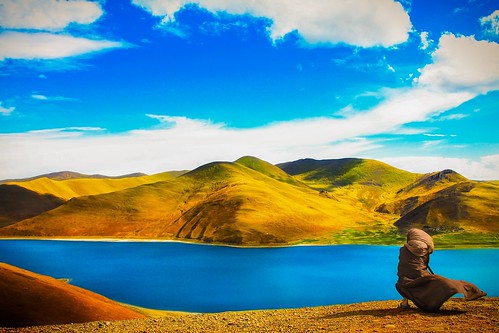
Pin for later:
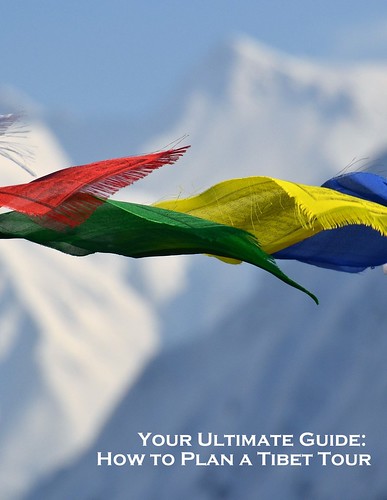
Have you been to Tibet? Do you have any tips to add?
